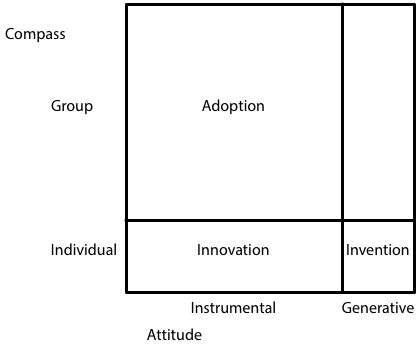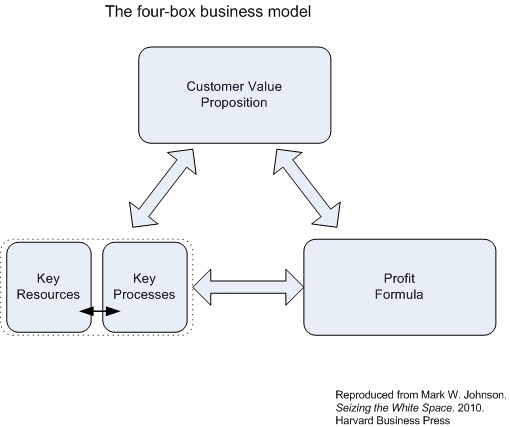[cross posted at FASTforward blog]
 Back in late May I got an email from Renee Callahan who edits Strategy and Innovation asking if I wanted to be part of a "blogger’s virtual book tour" for Scott Anthony’s soon to be released book, The Silver Lining: An Innovation Playbook for Uncertain Times. Who could resist? Especially for a book I was planning on reading anyway. I’m one of five bloggers speaking with Scott about his first solo book, The Silver Lining. The first three interviews can be found at
Back in late May I got an email from Renee Callahan who edits Strategy and Innovation asking if I wanted to be part of a "blogger’s virtual book tour" for Scott Anthony’s soon to be released book, The Silver Lining: An Innovation Playbook for Uncertain Times. Who could resist? Especially for a book I was planning on reading anyway. I’m one of five bloggers speaking with Scott about his first solo book, The Silver Lining. The first three interviews can be found at
and Boris Pluskowski will wrap it up tomorrow at The Complete Innovator. One excellent fringe benefit of this effort is discovering four new bloggers worth following.
Scott is the President of Innosight, a boutique consulting firm founded by Clay Christensen of the Harvard Business School. I caught up with Scott two weeks ago just after his return from trips to England, Switzerland, and Singapore. Clearly Scott was going to benefit greatly from the virtual aspects of this book tour. You can find my review of The Silver Lining at Constraints and innovation – is there a silver lining? What follows is an edited transcript of our conversation. I’ve also added links to supporting ideas and materials that we referenced during our conversation.
Chunking innovation processes
The Silver Lining advocates breaking the innovation process down into smaller chunks so that you’re not betting on a single roll of the dice. What lessons do you think you’re learning about managing the innovation process?
Scott: If you break things down into enough component pieces, you increase the odds that luck will turn in your favor. And that too goes to the whole notion of having a portfolio. If any one thing doesn’t work out that’s OK because you’ve got something else right behind it.
Now, you can take that to an extreme. You couldn’t take the notion of "let a thousand flowers bloom" inside a company because they can’t manage that kind of complexity but there is something to be said for having eggs in more than one basket.
That’s an interesting observation about the organizational capacity to manage complexity and dealing with the tension between the level of granularity you might like to have vs. the level you’re capable of managing. What about the rhetoric pushing for more market like processes within organizations?
Scott: Even the poster child of the full market approach, Google, is saying ""Hey, something isn’t quite working here. We need to instill a bit more rigor and discipline in these innovation processes. Because while we appear to be great at inventing, we aren’t great at actually innovating and creating an income statement that has more than 3% of our income in something other than search based advertising."
Innovation factories and their limits
How has Innosight’s mix of work shifted from finding and designing individual innovation ideas to putting more structure and discipline around the innovation process?
Scott: Not surprisingly, the mix has shifted toward the latter, although the two are inextricably linked. Five years ago, 80-90% of our work was "I’ve got this ideas, what do I do with it?" or "I don’t have any ideas, can you help me come up with some?" Today,50- 60% of our mix is "I need to build capabilities so this isn’t a one shot deal. How can I create an ‘Innovation Factory’ so I can churn out businesses."
I’m always a bit suspicious of factory analogies around knowledge intensive processes. How have you managed to create disciplined innovation processes without killing real innovation?
Scott: It’s a really delicate balance, There has been academic research that shows that the better organizations get at six sigma kinds of processes, the better they get at incremental innovation and the worse they get at disruptive innovation.
The notion that there is discipline in innovation is absolutely critical. The notion that disruptive innovation can be managed and can be mastered is absolutely critical. But you have to also recognize that it’s an intensely human effort so you cannot treat it the same way as an assembly line. I use those metaphors with some caution inside companies, because I know someone will ask me for the forms to be filled out.
P&G is one of the companies I’ve drawn examples from in the book. I know them and they’ve been very generous in sharing their experiences.That’s one of the sources of tension inside the company. They are a very process focused organization and have great stage-gate capabilities. What we’re telling them is that for some of these things you’ve got to trust the gut and intuition of a human being. If you don’t do that, you’re going to make the wrong decision. Some people are comfortable with that and some people are getting there.
Lessons learned about innovation processes
Have you found methods or practices in the way you deliver your intellectual capital or ways to structure the process and its metrics that have proven particularly effective?
Scott:If you go back to The Innovator’s Guide to Growth, which we published last year, versions of the qualitative measures we talked about in Chapter 6 are proving helpful. These qualitative and light quantitative measures help
The other thing we’ve come to believe is that it’s hard to do disruptive innovation in particular democratically; to be something that works at a grassroots level. Senior leaders either need to create a situation where there’s a great deal of organizational autonomy and people don’t have to go through standard operating procedures, or they’ve got to get personally involved. Otherwise, the efforts just stall out at some point.That was always in the literature, but from the field experience we believe it even more strongly.
Interesting…in other areas, such as the Enterprise 2.0 space that Andrew McAfee describes and the organizational changes triggered by new forms of collaboration technology, you see an argument that the grassroots is the place to start. Is it the particular characteristics of disruptive innovation that means you’re going to need a level of organizational air cover to succeed?
Scott: I’m absolutely sure that is the case. There’s a classification scheme out there which would make it clear how to handle a particular innovation. It could be fit with the business model, or degree of certainty you have, it could be degree of fit with your current capabilities. It’s certainly clear that there are things that not only can be done at the grassroots, but have to be done at the grassroots to work. But there are other things where if you don’t have the ”grasstops" leading in the right way, it just will not work. You need to have that supportive environment or the grassroots just wither and die.
Isn’t there a third level where you have to have a level of senior leadership engagement beyond the level of simply providing a supportive environment?
Scott:I’ve seen two benefits from this. One, a senior leader can do things that other can’t. A senior leader can route around existing processes in ways that a line manager can’t.
There’s a second thing a senior leader is able to do. Typically senior leaders haven’t got where they are by accident. They got a lot of informed judgment and intuition about industry space. Now, for some people that can lead to them having blinders on, but for others it gives them a tremendously good feel for a market space. That makes them hugely value-added team members, if you can get them to act in that kind of role. They know a lot from their accumulated experience and that allows them to say "that might work, but you need to do it this way" or "we tried this in 1973 and it didn’t work. If we made this change it might work today."
Value of shared frameworks about disruptive innovation
Isn’t the challenge there to equip senior leaders with a better feel for the underlying intellectual capital? To make sure they’re equipped with the right vocabularies and distinctions so that they don’t short circuit the process with "we tried that in 1973 and it’s not going to work."
Scott: There’s a huge role in all of this in having a common language in order to support the necessary culture change. It’s important to have those common frameworks, those common guides to discussion. The other thing that I really strongly urge senior leaders to do is to make sure they are bringing in different voices to these types of discussions.
It’s very easy to fall into the 73 trap of "we tried that and it’s not going to work." An outside person can say "yes, but it’s now 2009 and these are the three things that are different." You just don’t understand the unstated assumptions you are making until someone states them.
Jobs to be done
I’m struck by how the notion of "jobs to be done" appears to be a centerpiece of your work. It feels a lot like Ted Levitt’s old observation that people don’t buy drills because they like drills but because they need to make a hole somewhere. I’m curious as to what you see as the strengths of that element of your intellectual capital and where you see the limits and edges of that particular idea.
Scott: "Jobs to be done" isn’t a new notion at all. You can reference Levitt and you can go back to Drucker’s observation that your customer is rarely buying what you think you’re selling. In the world of innovation Dick Foster had pointed out many of the same phenomena in his work in the early 1980s. The hard part in these things and what Christensen did was to get the causal mechanisms and language right. He gave people a language to talk about it and tools to do something with it in a useful way.
That to me is the hard part about the ‘jobs to be done’ notion. The concept is easy. The hard part is what do I actually do with these intuitively appealing stories as a line manager? Providing that next level down to break this apart into a fundamental problem of a job to be done, some performance metrics to measure how well its being done, the barriers customers face, and some potential new solutions for them is the challenge. I think we’re maybe in the second or third inning of at least nine to go in terms of developing the tools and approaches that can really help people crack the nut on this one.
To be honest, I’ve been surprised about this. I remember back in 2002 when I was working with Clay and he was working on The Innovator’s Solution. In a very early draft of the book, Clay thought that the biggest idea in the book was the notion of jobs to be done. He wanted to call the book "Getting the Innovation Job Done." I told him he was crazy. The idea was too simple and I had to believe that people had already solved this problem.
As I’ve since learned, Clay’s intuitions were right. It’s an elegantly simple idea and not a new one at all. What Clay did was provide a language system and tools to work with the idea in a useful way.
I have to keep reminding myself of what Bob Sutton and Jeff Pfeffer pointed out in The Knowing-Doing Gap. Having the right tool or framework only solves about 5% of the problem. It’s why we exist as an organization. If people could just read books and have the answers to everything, there would be no need for them to hire Innosite, McKinsey, Bain, or any other consulting firm. The knowledge is all out there, but actually doing it inside a large, complicated organization is very challenging.
 Zero to One: Notes on Startups, or How to Build the Future Peter Thiel, Blake Masters
Zero to One: Notes on Startups, or How to Build the Future Peter Thiel, Blake Masters




![Reblog this post [with Zemanta]](http://img.zemanta.com/reblog_e.png?x-id=57bfe1f2-ba62-4696-aa99-a1cbbfa45775)

![Reblog this post [with Zemanta]](http://img.zemanta.com/reblog_e.png?x-id=0fbcfe67-82c2-4cbc-8b0a-f35bd321c828)






